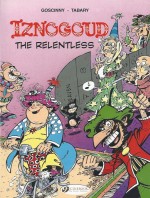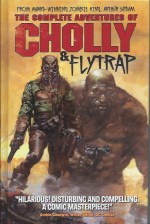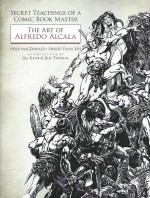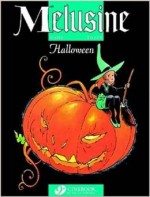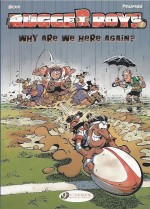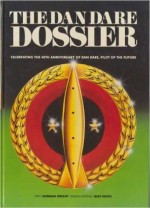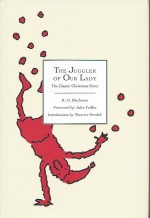I started out in this game just before the pyramids were built, making minicomics, collaborating on fanzines and concocting stripzines with fellow weirdoes, outcasts and comics addicts. Even today, seeing the raw stuff of creativity in hand-crafted paper pamphlets – or better yet professionally printed packages which put dreamers’ money where their mouths are – still gets me going in ways that threaten my tired old heart…
With that in mind here’s a quartet of little gems and treats that have landed in my review tray recently…
App-1 #1
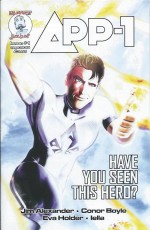
By Jim Alexander, Eva Holder, Conor Boyle, iella & various (Planet Jimbot)
As well as stunning graphic novels, independent publisher Planet Jimbot (likely lads Jim Alexander & Jim Campbell and an ever-shifting pool of burgeoning talent) also deliver proper comicbooks, and recently added to the simple superb Wolf Country and assorted anthologies was this wryly off-kilter full-colour entry into the world of superhuman adventurers…
Comprised of interconnected vignettes it all begins with ‘Tongue Lasher’ by Alexander, illustrator Eva (Bad Tooth) Holder & letterer Campbell who introduce an Earth under the scaly domination of nasty lizard men dubbed “The Bogeys†where curfew-breaking kids cower in fear until they meet an old dosser who tells them of the world’s greatest hero: a perfect superman now mysteriously vanished and forgotten…
However uttering aloud the forbidden name “App-1†carries fatal consequences…
Harking back to earlier, happier times ‘Above Us Only Sky: Part 1’ (Alexander, Conor (Dead Roots) Boyle & Campbell) reveals the superman in all his puissant glory after which ‘The Scorch App-1 Interview’ allows inside his head for some character-revealing intimate moments before ‘Above Us Only Sky: Part 2’ finds the hero nonplussed when a deadly meteor turns out to be occupied with something from “out there†before the first answers to all our questions are covered in ‘Scout’ Alexander, iella (The Ugly Duckling) & Campbell when a learned professor offers the hero a solution to unsuspected night terrors and performance anxieties. Of course sometimes it’s best to let such things alone…
With pin-ups and design sketches by Holder and Fin Cramb, this cheery, all-ages snappy Sci Fi superhero romp is the tantalising start of what promises to become a firm fan favourite in years to come…
© 2015 Jim Alexander and the respective artists.
App-1 #1 is available to buy at the Planet Jimbot shop: https://www.etsy.com/uk/listing/241056959/app-11
Assassin’s Creed: Trial by Fire #1
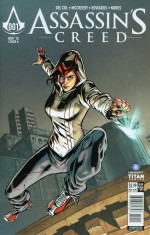
By Anthony Del Col, Conor McCreery, Neil Edwards & various (UbiSoft/Titan Comics)
I don’t normally cover actual comic issues but since somebody asked very politely, just this once I’m going to break my own rules. Although it’s not strictly small-press or self-published there’s nowhere else I can cover this first issue, so here goes…
Assassin’s Creed is a historical fiction action-adventure open world stealth video game, comprising, as of right now, nine main games and the usual wealth of multi-media supporting stuff. The games are available on almost every type of platform and are rather popular.
Apparently the core concept is derived from the 1938 anti-fascist historical/allegorical novel Alamut by Slovenian writer Vladimir Bartol and incorporates concepts from the Prince of Persia series. Broadly speaking, the game concept details the eternal battle between two ancient secret societies: The Brotherhood of Assassins and The Templars.
This lends itself to an infinite variety of scenarios for all-action tales such as this one from Titan Comics in which bored and idle conspiracy theorist Charlotte de la Cruz suddenly finds herself in the middle of one, thanks to her unsuspected genetic inheritance coming to the fore after playing a certain video game for too long and too well…
All too soon she’s thigh deep in death and danger thanks to her sharing the scary gift of many members of the Brotherhood: the ability to tap the memories of past lives.
Now, with an awful lot of people trying to kill her in spectacular fashion, The Brotherhood have specifically recruited her because something in her head (from an ancestor who endured the horrific Salem Witch Trials in 1692) holds clues to a threat very much active in the present.
And of course it’s a secret an awful lot of people want to kill her to keep…
There’s little more I can disclose without spoiling it for you but it’s all slickly engaging – courtesy of writers Anthony Del Col and Conor McCreery (Kill Shakespeare) and illustrator Neil Edwards (Doctor Who: Four Doctors) – as it races along and will certainly please fans of the game and the genre. I think I’ll wait until the book compilation comes out though…
™ & © 2015 UbiSoft. All rights reserved.


